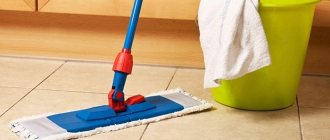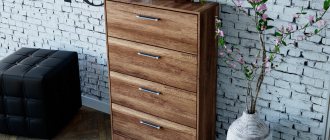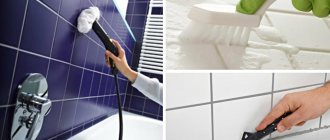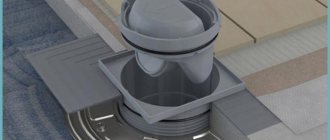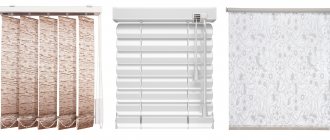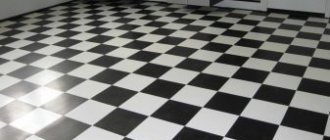After covering the walls and floor with tiles, dirty stains, traces of glue, and grout residues remain on the ceramics. The biggest problem is caused by the grout mixture left on the tiles. It hardens quickly, so if the moment is missed, you often have to look for options on how to wash the grout off the bathroom tiles after renovation so as not to damage the new cladding.
Removing grout from tiles can be done in different ways.
Types of grout
To quickly get rid of dried grout, you need to know which version was used to seal the joints, since there are 3 types of grout on the market today, each of which has its own characteristics
Cement based
Cement grout contains as an additional element a small amount of sand or polymer, as well as a pigment that determines the color of the mixture. This is a cheap and durable material that hardens for a long time, so removing its excess is much easier if you do it in time, before it dries completely.
Cement grout contains a pigment that determines the color of the mixture.
On epoxy resins
These are two-component mixtures consisting of epoxy resin and hardener. The mass hardens quickly and after that it resembles plastic, which is difficult to remove from the surface of the tile.
These are the 2 most popular and frequently used types of mixture for sealing tile joints when facing walls and floors in apartments and houses.
Cleaning tiles from hardened grout
If the excess fugue was not noticed in time or it was not possible to remove it before hardening, then you need to use special products with a special chemical composition. This product is based on an acid, thanks to which the concentrated cleaner removes hardened grout, cement, mortar, colored grout, primer and tile adhesive.
Acid-containing products differ in their concentration. This must be taken into account when choosing a product, depending on the type of tile and its resistance to such concentration.
The solution must be applied strictly to the excess grout with a brush. After this, wait the time specified in the instructions for the solution. The fugue softens to a state that makes it easy to remove it from the surface with warm water and a sponge. The solution is effective when applied to ceramics, porcelain tiles and tiles with a relief surface. Immediately after cleaning the excess grout from the surface, it is necessary to wash off the remaining solution to prevent its further destructive effect. It is best to do this with a soda solution, since the alkali neutralizes the acid.
Attention: Strict adherence to safety rules is mandatory when working with such solutions, since the concentrated substance found in such products can cause serious harm to health.
Recommendations for cleaning grout on different surfaces
No matter how hard the craftsman tries to seal the tile joints, some of the grout will still end up on the tiles. Moreover, this is provided for by the technology of the process itself. It is best to remove excess immediately after the composition begins to harden in the seam, since fresh fugue is much easier to remove.
But, firstly, this cannot always be done, and secondly, sometimes the surface of the facing tile itself is such that it is not possible to immediately wash it clean of the fugue. The methods of cleansing and options for using one or another product largely depend on the last factor.
Relief tiles
The greatest problems most often arise with tiles that have a corrugated surface. It consists of numerous small grooves, various grooves and depressions, where grout is retained when sealing joints. It hardens over time, and it is difficult to remove it using a rag soaked in water or even a special composition.
Therefore, the first thing you need to do, in order not to create problems for yourself, is not to rush with the work, but to seal the seams in a small area, even if it takes not 1, but 2-3 days.
Having filled a small space with the fugue, you need to wait until it sets, and then rinse thoroughly several times with a cloth soaked in water. After this, you need to take a sponge with a rough surface (a double-sided one, used for washing dishes, is suitable) or a small hard brush and use it to wash the remaining grout from the relief depressions of the tile.
Relief tiles are difficult to clean from grout.
In this case, you need to take as little water as possible so that its excess does not soak the beveled seam. After each approach, you need to wipe the tiles with a dry cloth, and clean the remaining contaminated areas again in the same way. After the jointed fragment has been completely washed, you can begin processing the seams of the next part of the wall or floor. Yes, the process is long, but if the fugue hardens “tightly”, then it will take even longer to pick it out from the relief tile.
A good way to prevent the grout from spreading over the entire surface of the tile is to use a special bag to fill the joints between the tiles. It is somewhat similar to a candy store. The metal tip on the edge of the container allows you to more accurately and evenly fill the empty space between the tiles with a fugue. In this case, horizontal seams are processed first, and then vertical ones.
When the moment has been missed, the best thing that can be done is to resort to the help of a special grout removal compound called a remover (for example, Atlas Szop). But since this is an aggressive chemical containing acid, you need to be careful with it - first try it on an inconspicuous area of the tile, somewhere in the corner, to check whether it will damage the surface of the finishing material.
Mechanical methods involving the use of metal brushes or sharp objects are unacceptable, since their use can lead to the loss of the attractive appearance of the tiles, the appearance of scratches and chips.
Porous materials
The most problems always arise with porous tiles, because they absorb all the dirt, not to mention the fugue. Therefore, the main way is prevention. In order to ensure that as little grouting material as possible gets into the pores, before starting jointing, you can treat the surface with a protective compound - Sopro AH737, for example.
Porous tiles absorb all dirt.
The product is carefully applied in a circular motion to the surface of the tile, and then, after the fugue has dried, it is removed along with it. The film formed on the tile will protect the pores from penetration of the grouting material into them, and at the same time will save you from labor-intensive work on its removal.
If problems cannot be avoided, you will have to use chemicals - acid removers or solvents. Their action is based on penetrating into the pores of the tile and pushing out contaminants, including fugue.
Fresh, just dried grout is best removed using a special felt glove dipped in vegetable oil.
Glossy surfaces
Grout is the easiest to remove from glossy surfaces. The main thing is not to use abrasive materials, since the tiles can be scratched by powder with strong friction or with a metal brush. Therefore, methods should be as gentle as possible, using soft sponges, water and non-aggressive detergents.
General information
Before you use any of the methods for cleaning tiles from grout, you need to understand what types of grout there are. Grouts are used to enhance the properties of finishing materials, increasing their resistance to mechanical damage. The final hardening of the grout occurs within approximately 24 hours. Primer mixtures reach maximum hardness two weeks after application.
Most often I use cement-based grout:
- silicone (elastic)
- not elastic
- water-repellent
- colored
- grout for rooms with high humidity levels
Important: when choosing grout removal products, take into account the susceptibility of the cladding to these products.
To avoid the work of removing excess grout from the facing surface, you can purchase special products that are applied in advance of working with the grout. Such products form a film on the tile, which is easily removed from the surface along with excess grout.
The product for treating tile joints (fugu) hardens quite quickly, the average pre-hardening time is about 15 minutes. Excess fugue must be removed almost immediately after it is applied to the tile. In this case, it can be removed without auxiliary means. All you need is a sponge and warm water. Instead of a sponge, you can use a rubberized rag to wash your car. Before starting work, make sure it is clean and free of sand.
Attention: Use smooth movements to wash off excess fugue without damaging the grout in the joints. We repeat this action several times. Each time you need to rinse the sponge thoroughly and wring it out just as thoroughly. It is most convenient to use water containers that have special rollers for squeezing.
If it was not possible to remove the excess fugue immediately after application, and it had time to harden, then there are the following cleaning methods:
- Using special graters with an abrasive coating. We begin to remove the fugue with the lightest movements, gradually increasing the pressure to the required level. This will avoid damage to the surface. We carry out cleaning starting from the lower surfaces, moving from bottom to top.
- Residual marks and stains are removed using warm water and a sponge, using successive movements and thoroughly rinsing the sponge in a container of water. Wash off using top to bottom movements.
For reference: unevenness in the grout between the tiles can be removed using curled sandpaper.
Silicone grout can be easily damaged even with a blunt object, so the technician will not have any problems removing it from the tiles. Silicone grout does not form mold, so it is used in rooms with high humidity, in particular in bathrooms. But most often, silicone grout is used in tandem with cement or epoxy grouts when filling joints whose thickness exceeds 5 mm. This allows you to avoid moisture getting into the deep layers of materials and the growth of fungus.
Features and methods of removing fresh grout
The technology for filling tile joints involves removing excess material from the surface of the tile immediately after the fugue begins to harden. For this, depending on the type, it takes her from 12 to 20 minutes. If you do not wait longer than the allotted time and do not allow the composition to completely harden, then it is not difficult to complete the job.
Excess material must be removed immediately.
Most often, specialists carry out cleaning in 2 stages:
- Dry. After sealing the seams in a small area and drying the fugue, take a special grater and, moving diagonally towards the seams, clean it. This allows you to get rid of grout residues on the surface of the cladding without causing harm to the jointed areas between the tiles.
- Wet. Involves washing the contaminated surface. Using a sponge or piece of foam rubber soaked in water, remove the remaining grout.
The work is simple and quick, the main thing is to wring out the sponge well so that excess liquid from it does not spread over the surface and soak the seams that have not yet completely hardened. To avoid streaks, you should thoroughly wash the sponge after each use and change the water as often as possible.
But even if there are stains left, you don’t have to worry - it will be easy to get rid of them later by wiping the lined surface with a dry cloth.
The main task at this stage is to try to wipe off the remains of the fugue in those places where it should not be.
Useful tips for caring for kitchen tiles
Practical tips for caring for ceramic tiles in the kitchen:
- To care for the glossy surface of the tiles, use a sponge or a brush with soft bristles, which will remove dirt even from the grooved surface of the coating without damaging the glossy glaze. It is not advisable to wash slabs with cleaning agents containing abrasives, metal brushes and other sharp objects. Otherwise, such cleaning will lead to changes in the coating and its fading.
- Do not overuse strong acid-base based detergents. After treating the tiles with this product, they will be clean, but will be seriously damaged if the seams are not coated with epoxy materials.
- Disinfectants with active substances effectively combat sources of unpleasant odors and mineral deposits. Use at least 2 times a month.
- Fungus and mold are easy to clean off at the initial stage of their formation. Prevention - a good ventilation system in the room.
- Soap is not suitable for cleaning, as it forms a film that will dull the shine of the cladding.
- Unglazed tiles are washed only with special emulsions that will protect the floor from mold. It is recommended to apply wax mastic to such tiles immediately after laying them, which will fix the color and act as a barrier to the development of microorganisms.
- Water and vinegar will help remove greasy stains from the cladding; glass cleaning liquid will replace expensive coating care products.
- Before washing the tiles, it is recommended to open the hot water tap for a while. As a result of such actions, steam will settle on the walls and the tiles will be easier to clean from dirt.
Reference . If you apply a cleaning solution to the entire surface of the tile at once, it will not be possible to completely clean the stains, since the substance will dry quickly.
How to remove dried grout
You will have to tinker with dried fugue: you won’t be able to remove it simply with water. But mechanical methods involving the use of brute force or abrasive materials are also not suitable. Most often, professional chemicals containing acids that destroy the remains of cement or epoxy mass are used to remove dried grout.
When choosing the appropriate cleaning method, you need to take into account the composition of the material used to fill the tile joints. In addition, it is worth considering the type of tile. Marble, for example, can lose its appearance when exposed to acid, so you should carefully read the instructions for the product you purchase.
For cement composition
When purchasing a product, you need to pay attention to the one on the label that says: “For washing off cement compounds” or “Cement remover”. Such drugs as Atlas Szop, Clean Kiilto, Keranet Mapei have proven themselves well.
Atlas Szop is a product for removing cement and limescale stains.
After purchasing the product, you can begin removing the dried fugue:
- Before work, wear protective equipment: respirator, goggles, gloves. It is advisable to open the windows in the rooms, and turn on the cold water tap in the bathroom.
- Apply the solution to areas where there is dried grout. If there is not much of it, you can use a brush.
- Wait 5-10 minutes.
- Take a sponge soaked in water and wash off the composition along with the soaked fugue. Wash the sponge, replace the water with clean water and rinse the tiles again.
- If it was not possible to completely remove the grout, the procedure should be repeated.
For epoxy grout
Fugue based on epoxy resins has better quality characteristics, but it also hardens much faster than cement. It can be removed using chemicals only in the first day after drying. There is no point in using them any further; dried epoxy will have to be removed mechanically, using a tool with a metal tip, which can result in damage to the facing tiles.
Since even the best craftsman will not be able to fugue the seams without staining at least small areas, the best thing to do is to stock up on a remover in advance and use it to remove the remains of the fugue during the work or immediately after it during the first days.
Fila CR10 is an epoxy grout remover.
The best compounds that have proven themselves in the “fight” with epoxy grout include Fila CR10, Litokol Litonet Pro.
The algorithm for removing excess grout is the same as in the case of cement grout.
How to clean grout from tiles after renovation
No matter how carefully you grout the seams, some of the material still ends up on the surface of the tile and must subsequently be washed off. It is easier to wash the grout while it is still wet - the surface can be easily cleaned with a regular rag, but when the grout has hardened, you will have to use other means.
So, how to remove dried grout from tiles? First, large fragments should be cleaned mechanically. Water is sprayed onto the contaminated areas, after which they begin to remove the remaining grout with a scraper or a stationery knife. The remaining stains are wiped off with a sponge soaked in acetone.
The most difficult thing to deal with is epoxy grout residue. How to clean epoxy grout in a bathtub? First you will have to stock up on some tools. First of all, you will need a steam generator, or at least an iron with a steam function. The plaque is exposed to steam, after which the stains are wiped off with a regular dry cloth. From particularly contaminated areas, epoxy grout can be removed with a spatula after softening with steam.
When using ready-made products containing acids, you must first check the reaction of the enamel covering the tile to the drug used, for which you use the pieces left after the repair. All work in the bathroom should be carried out wearing a respirator and protective gloves.
Traditional methods of cleaning cement grout
In the absence of professional removers and in the presence of small contaminated areas, you can try to get rid of hardened cement grout using folk methods.
Available tools include:
- White Spirit. 1 tbsp. l. The product should be poured into 200 ml of warm water. Soak a piece of cloth in the resulting remover and leave it on the stain for 10-15 minutes. After this, rinse with water.
- Glycerol. Mix with water in a ratio of 1:3, then try to clean the dried fugu with the resulting product.
- Limescale remover. It must be applied to the grout and wait 15-20 minutes. To prevent the product from evaporating, it is better to cover it with a piece of polyethylene.
- Soda and vinegar. 3 tbsp. l. mix soda with 3 tbsp. l. vinegar, apply the resulting slurry to the stain and leave for 20 minutes.
- Ammonia solution. Pour 1 tbsp into 1 liter of water. l. ammonia. Apply the mixture using a spray bottle or brush to the stained surface, wait 10 minutes.
- Lemon acid. In 1 tbsp. add 1 tbsp of water. l. citric acid, apply to areas with dried fugue for 15 minutes, rinse with plenty of water.
If there are small contaminated areas, you can use white spirit.
Fungus removal
If black spots - fungus and mold - begin to appear in the kitchen, they should be cleaned immediately, as the stains grow over time and it may be necessary to remove all the cladding.
The causes of mold formation can be:
- high humidity;
- accumulation of dirt in the seams between tiles;
- lack of systematic care;
- systematic contact of tiles with water and high temperatures.
How to clean the seams between tiles in the kitchen due to fungal growths and mold? The use of antifungal antiseptic solutions is very effective. They are applied for 30 minutes and then rinsed with plenty of clean water and the area wiped dry.
Other methods are possible:
- Bleach . It is diluted in a ratio of 1 part product to 10 parts water.
- Steam cleaner . The device uses steam to remove fungus, mold and their spores from the surface.
- Bleaching . Capable of killing bacteria and harmful microorganisms if they have not penetrated deep into the surface.
- Soda Ash. Apply the product to the grout and use a brush to remove all plaque from the surface. This cleaning method allows you to get rid of the fungus, but you will have to put in a lot of effort and time.
- Felt pen . A special bar disinfector destroys dangerous bacteria and perfectly masks seams.
If all the above methods do not help get rid of mold, then you will have to completely replace the old grout.
Important . Change the grout on the seams every few years to prevent the appearance and development of fungus.
Homemade ways to clean up epoxy grout residue
To deal with epoxy resin, you can try the following techniques:
- Heating dried grout. A hairdryer is used for these purposes. The stain is heated and then carefully removed with a spatula or sharp knife. The remaining small particles are washed off with acetone or solvent.
- Freezing. Some craftsmen who tell how to clean epoxy grout from tiles consider this method to be one of the most effective. You need to purchase refrigerant in the form of an aerosol at the store and spray it on the stain. Freezing will cause the epoxy to become brittle, making it easy to remove with a knife.
- Treatment with hydrochloric acid. With its help you can quickly get rid of small stains of dried epoxy, but when using the product you must remember that it is aggressive, so it is not suitable for all types of tiles.
Removing grout from a raised surface
What to do if the necessary precautions for getting grout onto the tiles were not taken, and the facing surface was damaged. There is a special preparation for protection against grout contamination - Sopro AH737. The product is applied in an even layer. Otherwise, stains may appear on the tiles. Apply with a soft brush or regular sponge using soft circular movements.
Attention: before starting work on removing grout, try using this product in an inconspicuous place and see the reaction of the facing surface and the level of its damage..
Products with aggressive chemical compositions, as well as powder products, are not used to remove grout from embossed tiles, since during the cleaning process scratches may appear on protruding surfaces and the decor and pattern may be damaged.
For reference: there are special bags for filling seams. This bag is identical to a pastry bag: a container for filling the grout and a metal tip through which a uniform, small amount of grout leaves the container. It is necessary to fill all the seams sequentially: first horizontal, then vertical. In this case, the grout will lie more evenly than when filling the seams around each tile. Despite the difficulties described above in cleaning tiles from grout, squeeze out a little more grout than seems necessary. The grout in the seam must be pressed tightly, compacting it and filling the entire space in the seam.
How to remove traces of glue on tiles
Often, traces of not only dried fugue, but also tile adhesive remain on the cladding. To avoid problems with cleaning after the renovation is completed, it is recommended to wash the tiles with a sponge soaked in water during the installation process. Fresh glue is removed easily and quickly, and the procedure itself does not take much time. But no matter how the master is washed, small dried pieces of the composition may remain in some places.
It is recommended to wash the tiles with a sponge moistened with water.
To remove these traces, you can:
- Use mixtures based on vinegar, citric acid, ammonia (as in the case of cement grout).
- Remove any remaining tile adhesive using a spatula, scraper or sandpaper, being careful.
- Use chemicals designed to remove cement or hydrochloric acid.
From glue
Removing glue from a tile surface is not easy. There are three main ways to remove adhesive residue from tiles:
- Still wet glue can be removed using a damp cloth and a scraper. You need to act carefully so as not to damage the surface of the tile.
- The old glue will have to be softened first. Prepare an aqueous solution with ammonia in a ratio of 1 to 1, then moisten a rag and apply it to the contaminated area. After 15-20 minutes, you can remove the softened glue residue with a spatula. Putty and cement can be cleaned in the same way.
- Another softening method is using acetone. The fabric is also impregnated with it and applied to the dried fragments. Clean the dirt with a spatula after 20 minutes.
If the surface was stained with sealant, gasoline will help. Silicone stains are cut off with a spatula and then cleaned with a cloth soaked in gasoline.
Other contaminants during repairs and methods for cleaning them
The process of covering walls or floors is always associated with the appearance of construction dust, debris and dirt. At the end of the work, stains and traces of paint or primer often remain on the tiles. All this requires timely removal, otherwise over time these substances will be much more difficult to remove.
Traces of paint
There are several ways to remove paint residues:
- Gently scrape off with a sharp knife or blade.
- Remove any remaining paint with a cloth soaked in acetone.
- When the stains are large, it is better to soak a piece of cloth in a solvent and leave it on the contaminated surface for 15-20 minutes. After this, rinse with water.
When using one or the other method, care must be taken, especially in cases with glossy surfaces. They can be easily scratched with a sharp object or the texture can be damaged by a product containing acid.
Remaining primer
After drying, the primer leaves unsightly white spots that often cannot be washed off with plain water.
The primer leaves white marks on the tiles.
To get rid of its traces, you can use the following cleaning options:
- Try to carefully scrape off the stain with a scraper.
- Add 1 tbsp to 5 liters of water. granulated sugar, boil. With the mixture cooled down but still hot, rinse the stained surface.
- Leave a cloth soaked in solvent on the stain for 10 minutes, then rinse with warm water.
- Apply fresh primer to the old stain and leave for 5-10 minutes. It will soften the hardened product, after which it can be easily washed off with hot water.
- Use a special primer remover, which is sold in hardware stores.
Construction dust
Of all the contaminants, construction dust is the most harmless, although cleaning will still take time.
What to do after the repair is complete:
- Using a rag or soft brush, sweep all debris from the walls and floor into one place and carefully collect it.
- After this, remove smaller particles with a vacuum cleaner.
- Remove remaining grout or adhesive stains using a suitable method for the particular case.
- Wash the tiles with warm water.
- To consolidate the effect, use household chemicals to care for ceramics.
- Wipe the tiles with a dry cloth or microfiber cloth. This will remove any remaining stains and give the tiles a shine.
It's good if you have a steam generator at home. Steam treatment of the facing surface will remove all dust not only from the tile itself, but also from the freshly jointed surface, as well as from hard-to-reach places that are difficult to clean with a rag or sponge. At the end of the process, you need to wipe all surfaces with a dry cloth.
Necessary tools and tools
Let's choose the optimal product for removing dirt that has formed in tile joints and consider in more detail all cleaning methods.
Use of industrial cleaning products
Specialized ceramic care products help renew it, resulting in the tile regaining its shiny surface. The composition of the selected household chemicals allows you to clean a specific type of contaminant, while some types have a wide spectrum of action. However, as practice shows, industrial cleaning agents will do the job if the accumulated dirt is not old.
The most common products recommended for purchase:
- Cillit BANG. Copes with limescale, rust, soap stains. The spray breaks down fat and gives the surface shine.
- Domestos . For tiles, the best option is a spray, due to its convenience and ease of use. The substance copes with any type of pollution, including mold in the initial stages.
- Mr Muscle . Suitable for getting rid of grease, soap stains, and limescale. After it, almost no streaks form on the surface.
- Comet . The spray copes with plaque, removes grease, dirt and other contaminants and adds shine to the surface.
Important . Chemicals can corrode the skin of your hands, so wear gloves when using them.
Here are some tips to help restore your tiles to their former cleanliness:
- Use the popular melamine sponge to combat plaque. This effective product easily cleans kitchen tiles. Just wet the sponge and rub it in the dirty areas.
- To clean ceramics, use liquid and gel-like compounds that will not damage the tiles.
- Use soft washcloths, microfiber cloths, waffle and terry towels made of natural fibers, and toothbrushes for work.
- Do not use powdered products to clean tiles as they will damage the surface of the tiles.
- To clean ceramics, you should also not use rough brushes, steel wool, toilet cleaners, hand washing powders, dishwasher cleaners, sink and stove cleaners, or acid-containing detergents, as all this will destroy the tile coating.
Steam cleaning
A good result in the fight against dirt in tile joints is achieved by using a steam cleaner. Under the influence of high temperatures and water vapor pressure, all dirt from the seams is instantly removed, all that remains is to wipe it off from a clean surface. This cleaning option is the most environmentally friendly and safe.
Cleansing with bleaches
Bleach is effective on recently darkened joints. Dirt, fungal growths and bacteria from white grout can be easily removed using chlorine-containing products: Domestos, “White” and Cif Ultra White.
It is not recommended to treat colored seams with such substances, as the color will become faded. The “Snowball” whitening pencil is in demand - its components are absorbed into the cement and destroy mold and bacteria.
Method of using bleach: apply the product to the contaminated surface with a brush and leave for up to half an hour, after which it is thoroughly washed off with water, since it penetrates deeply into the porous structure.
On a note. For best results, add baking soda to the bleach.
Use of improvised means
According to the advice of housewives, homemade recipes are effective methods for cleaning joints between ceramic tiles:
- citric acid or lemon juice eats away grease and other dirt;
- vinegar perfectly cleans and disinfects surfaces;
- ammonia effectively fights dirt and adds shine to the surface;
- bleach removes dirt and disinfects.
All products are diluted in water, after which the seams are treated with the prepared solution.
No less effective are the available materials:
- a microfiber cloth in combination with dishwashing liquid gently collects stubborn dirt and destroys the structure of grease and other dirt;
- chalk and paper, where chalk fights dirt, treatment with paper after it dries gives the tiles a pristine shine.
Mechanical cleaning
If you still cannot clean the seams using chemicals and folk remedies, then you should try the mechanical cleaning method manually or using a power tool.
Manual work steps:
- Before cleaning begins, the edges of the tiles are sealed with masking tape.
- Three movements are made along the joint strip with a sharp knife: a central cut in a vertical direction to the plane and two side cuts - on the right and left at an angle, trying to reach the concrete base. It is advisable not to touch the edges and corners of the tiles to avoid damaging them.
- Remove any contaminated grout and scrub away any remaining grout using a stiff brush.
- Use a powerful vacuum cleaner to remove more dirt.
- Treat the seams with an antiseptic.
- If fungal formations were present, then apply a special product inside so that the drug gets on all surfaces. Wait for the solution to dry.
Reference . It is more convenient to work with a special seam stitcher - a handle with a 1.0-1.5 mm thick blade attached to it, coated with diamond dust. The tool has a rational (45º) angle of inclination of the lever to the surface, so your hands do not get tired for a long time. In one pass, the entire length of the seam is cleaned.
Using power tools speeds up the process. However, the load on the hardened sealant increases significantly and the tile that does not fit tightly to the base will simply bounce off.
The following devices are often used:
- Electric drill - a drill for ceramics is selected thinner than the gap between the joints, and the speed is set to the minimum. The concrete base is reached in 1–2 passes.
- Bulgarian. The tool requires a certain amount of skill, as the disc can easily damage the tiles.
- Screwdriver.
Before applying a new sealant, the joint surfaces are degreased with kerosene or white spirit.
Preventive actions
To avoid the need to get rid of the grout remaining on the surface of the ceramic tiles after repairs, it is better to take preventive measures to prevent the grout from getting on the cladding. There are not many of them, some of them are labor-intensive, but sometimes, especially in the case of epoxy grout, it is easier to prevent its appearance than to deal with dried residues.
One of the most effective methods is the use of protective foam, which is used to cover the tiles, and upon completion of work, wash it off along with the remains of the dried fugue.
Masking tape will also help. It needs to be used to cover the entire perimeter of the tile, leaving only the spaces for the fugue free. This process is labor-intensive, but also effective.
The most important preventive measure is considered to be compliance with the technology of stage-by-stage jointing of one area after another and thorough cleaning of the composition remaining on the ceramic tiles. It’s better if the process takes a long time, but after it you won’t have to clean the tiles of grout residue using chemicals that are harmful to health.
How to clean the seams between tiles
If cosmetic renovations have been carried out in the bathroom or kitchen, then after completion of the work you can often find dust and dirt clogged in the seams between the tiles. To wash a dirty seam, you need to prepare a special paste of baking soda and water.
For 3 parts baking soda you will need 1 part water. The ingredients are thoroughly mixed until a paste of thick consistency is obtained. This paste is rubbed into the joints between the tiles and left for 10-20 minutes.
While the paste is drying on the wall, prepare an aqueous solution of vinegar. You will need: vinegar - 1 part, water - 1 part. The resulting solution is sprayed over the paste placed in the joints. Bubbles will appear on the surface of the paste, which means the cleansing reaction has started. After the reaction is completed, the seams are cleaned with a hard bristle brush. Particular care must be taken to clean the areas where the wall and flooring come into contact.
You can complete the cleaning with plain water, rinsing the tiles and grout to remove paste residue.
Causes of pollution
The joints are filled with building compound during installation. Their pristine freshness does not last long. Under the influence of daily aggressive influence on the material, they gradually lose their appearance and darken. The causes of destruction are the following factors:
- the appearance of mold and mildew due to waterlogging;
- microorganisms appear at the joints, destroying their composition;
- Dust settles and, under the influence of moisture, turns into dirt.
The occurrence of mold and mildew in the home is dangerous for humans. Therefore, finishing coatings need timely cleaning.
When to change grout
In a situation where the fungus has penetrated deep inside the grout, there is no point in cleaning it, since the mold will return again and again. To get rid of the problem, you will need to completely change the composition. To do this you need:
- apply water to the tile joints with the addition of a small amount of nine percent table vinegar;
- when the grout softens a little, clean it completely: a spatula or knife can act as a cleaner;
- treat the seams with an anti-fungal compound;
- apply new grout.
Features of pollution
In the process of jointing tile joints, excess material always appears on its surface. To clean the grout from the tiles, just use a wet sponge. But you need to pay attention to this during the application process, while the solution is fresh. It is more difficult to scrub off grout on tiles that have dried out.
This work should not be overdone, as there is a risk of damaging the tiled surface. For such cases, special means are offered. Thanks to them, you can remove dried grout from the cladding without damaging the tiles. But you need to choose such a product correctly in accordance with the recommendations, otherwise, in this case, damage is possible.
If the facing material has a porous structure, then it is more difficult to wash the tiles from the fugue, which has already set, since the mechanical impact will definitely damage the finish.
For these reasons, attention should be paid to removing the fugue from the surface immediately after application, without waiting for it to dry.
How to clean various stains?
There are many ways to help restore the whiteness of the seams between tiles. Which one to use depends on the nature of the contamination.
If the cause of the darkening is dirt and living conditions, the process will be simpler. In cases where the grout is affected by fungus and mold, more complex, sometimes even radical steps will be required.
How to remove fungus?
But if the cause of dirty seams lies not in dust and detergent residues, but in mold, you should use slightly different methods:
- If it has just begun to appear, then you can prepare your own disinfectant from bleaching gel and ammonia with water. To do this, mix 100 g of “Whiteness” and 50 g of ammonia. This solution is poured into a liter of hot water, and then applied to the fungus with a spray bottle and left for half an hour. After this time, the seams are wiped with a damp sponge and washed with warm water. Then they wash again with water, but with the addition of vinegar at the rate of 100 g of 9% vinegar per liter of water.
Don't miss: How to cut tiles with an angle grinder without chipping: a detailed guide for beginners. How to cut tiles without a tile cutter: a few simple ways
- If the mold appeared a long time ago or appears regularly and progresses, then it can only be cleaned using a radical method. To do this, the seams between the tiles are cleaned with a scraper and treated with a special antiseptic, which can be purchased at a plumbing store or pharmacy. After it has completely dried, the seams are sealed again and once again treated with an antiseptic solution.
It is necessary to clean the seams between floor tiles from fungus in a timely manner. Otherwise, mold will begin to grow and can not only disfigure the entire room, but also cause serious harm to health.
Nicotine
The settling of soot from cigarette smoke causes the seams to turn yellow or brown. Solving this problem is not difficult. The main thing is to choose the most suitable bleaching agent or thoroughly wash the putty, armed with a stiff brush and special chemicals.
Traditional cleaning methods have also proven themselves well in this case.
Rust
In places where metal water pipes pass, there is a high probability of rust, which flows in brown streams onto the floor and contaminates the grout.
If the tile has been laid recently and it has not yet lost its integral structure, it will be sufficient to thoroughly wash the floor and seam from dirt using special products designed for this purpose. If rust penetrates deep into the pores, the affected area of the material will need to be replaced.
Old stains
It is difficult, sometimes even impossible, to clean tile joints that have darkened over time and absorbed various contaminants. The best option may be to completely resurface the grout or clean it and paint it.
In the first case, it will take a lot of time and effort, but the result will last a long time. After painting, the beautiful appearance will remain for no more than a year. But all work will be completed quickly and without special investments.
Bleaching seams
Often it is not possible to restore the bright whiteness of the seams between tiles by cleaning. In such cases, a special bleach, made with your own hands from liquid soap, soda and hydrogen peroxide, or purchased at a hardware store, will help.
The mixture in the form of a paste is applied to problem areas or the entire surface and lightly rubbed into the grout. Leave for several hours and then wash off with clean water. It is recommended to carry out this procedure several times a year. Manipulation helps not only to whiten the seams, but also to kill fungus and mold.
Mold
Mold is a type of fungus, and the same means are suitable for combating it. If there is not a lot of mold, you can paint over the darkened seams with a special felt-tip pen. It contains disinfectants and waterproof paint. Please note that you cannot use soap in this case, as it promotes the spread of mold.
Cleaning seams after repair
The process of cleaning the seams and the tiles themselves after the repairs deserves special attention. After such work, particles of paint, solutions, mixtures, glue and other repair compounds may appear on the floor. And a standard detergent, especially plain water, won’t do the job. To clean the seams from dirt after repair, kerosene, ammonia or various solvents are used. All these products cannot be used in concentrated form, only diluted. They have a softening effect on stains, after which the stains come off easily.
Washing the bathroom floor
If none of the above remedies help, then you can remove the dirt using a scraper. If a stain is removed from the surface of a tile, then you need to act carefully without damaging the surface.
Remove other contaminants
There are other contaminants that can be classified.
| Nicotine | If there is a lot of smoking in the room, then over time a yellowish or brownish coating appears on the seams. This problem can be easily solved with the help of acetone, gasoline, white spirit and other organic solvents. If the situation is not advanced, you can get by with vinegar and lemon juice. |
| Rust | Rust on the grout only appears if there are pipes nearby. The best option to get rid of such a scourge would be ordinary household chemicals marked “For rust,” for example, Sanox. Alternatively, you can use a melamine sponge. |
| Old stains | It is best to immediately get rid of old yellowed or cracked grout and make new one. But you can try to revive it with folk or industrial means, or simply paint it over with a special marker. But the result of such cleaning by a renovator will last for a maximum of a year, then you will have to repeat the procedure. But a pencil like this is a great way to briefly refresh and update the appearance of your seams. |
If you regularly clean the joints, the grout will not deteriorate, even if there is a lot of smoking in the room, there is a chimney nearby, or it is simply 10 years old. The main rule in caring for seams is regularity.
It would seem that white seams are the most difficult to clean. This is actually not the case, as any bleach will do the job. But colored grouts cannot afford such a product, as they will significantly lose their brightness. That is why there are usually no difficulties with how to bleach seams. The main thing is to be careful and not step on the tiles.
Mechanical methods
Epoxy grouts are poorly susceptible to chemical attack by acid-containing substances, so mechanical methods are the most effective for removing such mixtures. To remove old stubborn compounds mechanically, it is recommended to use the following tools:
- a small cross-section screwdriver, a construction knife, a gravel or a chisel of a suitable size;
- a stripper specially designed for cleaning tile joints;
- electric drill with a thin drill;
- Dremel (jigsaw), which is equipped with a flat half-disc;
- a screwdriver with a brush attachment consisting of a small disk with metal fibers.
Of the listed tools, the most convenient for cleaning seams are a construction knife, which requires painstaking work, and a stitcher, which is popular, but at the same time inappropriate to purchase, since it is unlikely to be useful in the future.
No less popular is the simple method of cleaning seams with an electric drill. However, in order not to damage the tiles, before starting work it is necessary to carry out initial measures: preparing a solution of water and vinegar in equal proportions and lubricating the seams with it.
The tile-safe solution will soften the grout slightly after 30 minutes of application, allowing it to be removed quickly without leaving any gaps. The drill should not exceed the thickness of the seam. It is recommended to keep the power to a minimum; this will prevent deformation of the tile boundaries and the appearance of cracks. After thoroughly removing the grout mixture, the resulting empty grooves must be vacuumed or cleaned with a stiff brush. After this, wash the seams with a damp sponge and treat with an antiseptic composition.
Instructions for removing grout with a construction knife:
- The knife must be placed in the center of the seam and, applying force, draw a line with it (if it is difficult for the knife to penetrate into the old dried mixture, you can gently tap it with a small hammer).
- To avoid scratching the tile, hard-to-cut dry mortar can be cut off first from one edge of the tile, then from the other.
- After painstaking cleaning, the remaining mixture should be cleaned with a piece of sandpaper, and the seams should be impregnated with an antifungal primer or antiseptic.
To avoid damaging the tile surface, do not use the following tools: hard metal sponges, scrapers, plastic brushes and abrasives.
With acid
Vinegar or citric acid is used. They are diluted with water to obtain a concentrated solution. It is applied to the space between the tiles, where it stays for an average day. Vinegar works faster, citric acid works longer. If you don’t want to bother with preparing the solution, you can replace it with any acid-based plumbing care product.
With glycerin
Mix water and glycerin in proportions 3:1. The resulting liquid is used to process the old mixture. In a few hours you can remove it.
Grout restoration
Grout restoration involves cleaning contaminated areas or partially replacing it. Conventionally, we can distinguish several stages of restoration of tile joints:
- Cleaning seams using various chemicals - special or household.
- Removing damaged areas of the old fugue.
- Preparing and treating cracks with protective compounds to prevent damage to new grout.
- Grouting with a new fugue.
Restoration of grout using special means
Products for restoring tile joints are available in plastic bottles with a sprayer. When choosing, you need to pay attention to which fugue colors it is suitable for. A solution for working only with white grout will not be suitable for colored grout, as it will make it colorless. For colored seams, you need to choose a product designed for them.
There are toxic chlorine-containing products, which must be handled with gloves, and non-toxic - environmentally friendly solutions with components of plant origin; working with them does not require protection.
Ready-made grout cleaners are convenient because they can be used immediately after purchase. They have clear instructions for use, which eliminates the need to experiment. However, their cost may not in all cases be justified by the results obtained.
Restoring grout using household chemicals
Seams made with cement fugue require regular cleaning because they have a porous surface that accumulates dirt. Epoxy grouts create a uniform surface without pores, so they are easier to keep clean.
You can update and clean the tile joints with special products that are designed for this purpose, or with simple household cleaning gels for dishes, plumbing, and laundry care, which can be combined with each other to obtain a better result.
Partial removal of the top layer of grout
If the joints between the tiles have a uniform structure, are strong and there is only a need to update them, then it is not necessary to remove the fugue completely.
In order for the seams between the tiles to be made efficiently, you need to remove the old grout to a depth of at least 2 mm. Cement grout is removed using a scraper, the tip of which is suitable for these joints. After this, the edges of the tiles are processed with fine-grained sandpaper and the cracks are primed to ensure better adhesion of the fugue to the cladding.
A scraper is also used to remove epoxy grout, but further processing is performed with a special solvent.
Restoration with marker
A marker for painting tile joints with a waterproof effect allows you to mask contaminated areas that cannot be cleaned. This is easy to do: you need to carefully go through all the places that require adjustment.
Before work, the required areas must be prepared - cleaned of dust, dirt and mold. If necessary, repair cracked areas.
This method is cosmetic and its effect is temporary. After a few weeks, the seams will again lose their cleanliness.
Precautionary measures
In order not to harm your health or damage the cladding, you should follow safety precautions.
This:
- constantly ventilate the room;
- carry out cleaning using rubber gloves;
- When removing dirt from glossy tiles, do not use substances that can scratch the surface or hard brushes, otherwise the cladding will lose its appearance;
- in order not to spoil the sewing seams, they are sealed with tape before washing;
- Do not use substances containing fats.
